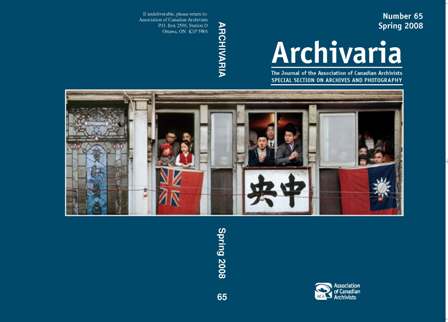All Singing, All Talking, All Digital: Media Windows and Archiving Practice in the Motion Picture Studios
Résumé
The InterPARES 2 case study on moving images investigated the digital archiving practices of a commercial movie studio with regard to material from a computer-generated animated feature film. The results showed that the traditional neglect of potentially useful archival materials on the part of the movie studios, is carried over into the digital world. In order to explain why good archival practice has not made economic sense to the industry over the years, we review the development of the motion picture industry in relation to cultural property, and argue that the shortsighted vision of the studios deprives them of future profitable options. We look at trends in media packaging and consumption, and speculate that untapped revenue streams currently available and unknown future possibilities provide enough economic incentive for the studios to archive their assets in a systematically or ganized repository. We conclude that the studios stand only to gain from implementing good archiving practice at the time of production, that the victorious players in the fast-moving and unpredictable world of media evolution will be the ones who have the help of professional archivists, and that in the process, cultural heritage materials will get better care than they have ever had before.
RÉSUMÉ
L’étude de cas d’InterPARES 2 sur les images en mouvement a porté sur les pratiques d’archivage numérique d’un studio commercial de cinéma relativement au matériel généré par un film produit par infographie. Les résultats ont montré que le désintérêt traditionnel des studios de production pour les documents qui pourraient avoir une valeur archivistique potentielle s’est transposé dans le monde du numérique. Afin d’expliquer les raisons pour lesquelles l’industrie du cinéma n’arrive pas à croire que les bonnes pratiques archivistiques sont justifiées sur le plan économique, les auteurs examinent le développement de l’industrie cinématographique en lien avec la propriété culturelle et af firment que la vision à court terme des studios les prive de futures occasions de profit. Les auteurs explorent les modes pour ce qui est de l’emballage et de la consommation des médias et ils avancent que les sources de revenus présentement disponibles et non exploitées par les studios, de pair avec les possibilités futures encore inconnues, of frent un incitatif économique suf fisant pour que les studios veillent à l’archivage systématique de leurs documents dans un centre d’archives. Les auteurs concluent que les studios ont tout à gagner en adoptant de meilleures pratiques archivistiques à l’étape de la production cinématographique, que ceux qui travaillent en collaboration avec des archivistes professionnels seront des acteurs gagnants dans le monde rapide et imprévisible de l’évolution des médias et que, dans tout ce processus, les documents du patrimoine culturel auront une considération qu’ils n’ont jamais connue auparavant.
Authors of manuscripts accepted for publication retain copyright in their work. They are required to sign the Agreement on Authors' Rights and Responsibilities that permits Archivaria to publish and disseminate the work in print and electronically. In the same agreement, authors are required to confirm that "the material submitted for publication in Archivaria, both in its paper and electronic versions, including reproductions of other works (e.g. photographs, maps, etc.) does not infringe upon any existing copyright." Authors of manuscripts accepted for publication retain copyright in their work and are able to publish their articles in institutional repositories or elsewhere as long as the piece is posted after its original appearance on archivaria.ca. Any reproduction within one year following the date of this agreement requires the permission of the General Editor.





